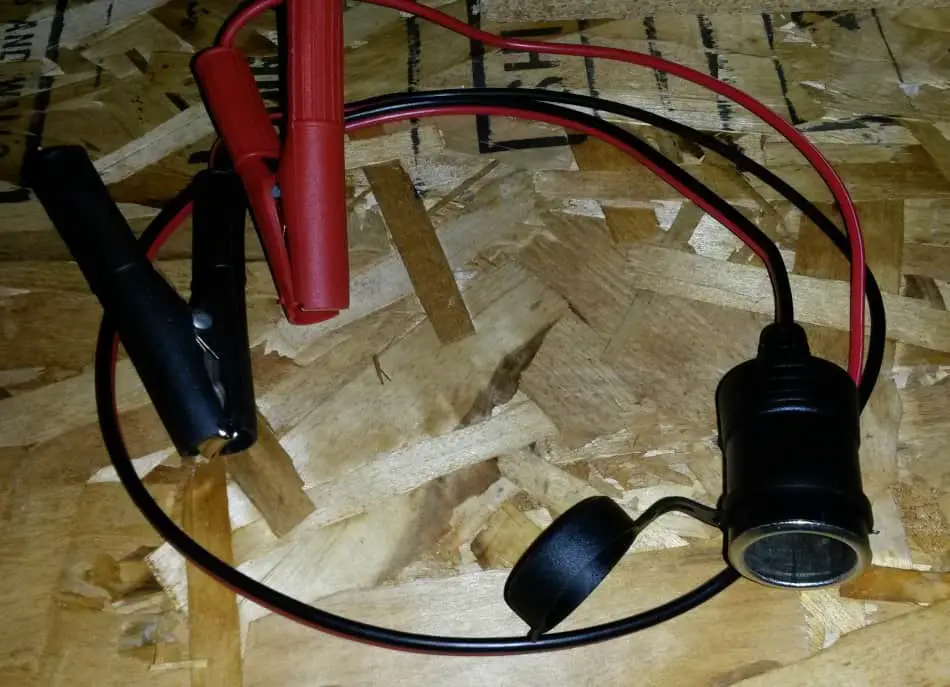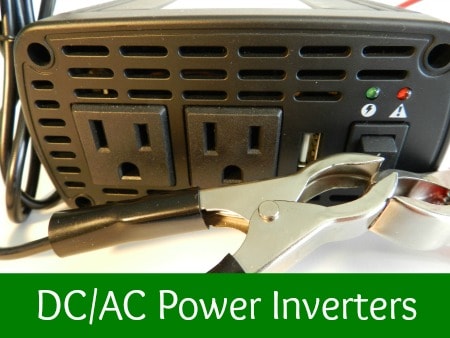Whether you’ve been camping, on a road trip, or ended up in a power outage, you’ve probably found yourself wondering at some point, “just how many times can my car battery power my cell phone?”
How many times can a car battery charge a phone?
A healthy car battery with a 50 amp-hour equivalency rating should be able to charge any of the Samsung Galaxy model cell phones about 20 full times and an iPhone model around 30 full charges while still being able to start the vehicle. Double the number of charges if the car battery is being fully drained.
Each make and model of cell phone is different in their battery capacities which will dictate how many charges you can expect from your car battery.
The higher the cell phone’s watt-hour rating, the more watt-hours it will remove from the car battery to charge it.
The way in which you charge the phone will also play a critical role in the number of charges you can expect!
I researched the latest models of the Samsung Galaxy product line, and the iPhones as well and made a comprehensive chart at the bottom (click to find your Samsung or iPhone if you’re in a hurry).
I will be covering the capacity of a car battery, the methods of charging, how I ran the calculations, what we can take from them, the pros and cons of each method of charging.
I’ll also have a full example to demonstrate how you would figure out the calculation for your own phone if it wasn’t listed here.
Let’s jump into it!
How Much Power does my Car Battery Have to Power my Cell Phone?
This is a good question and can be a little tricky.
Car batteries are “starter batteries” which means that they are not meant for “deep cycling”. So, you’re not really supposed to run appliances off of them or gadgets over the long-haul.
They are designed to simply expend about 2-3% of their capacity in a few seconds (a lot of amps though!) and then be recharged by the alternator as you drive.
The internal structure and design of a car battery is not suited for extensive use below the 90% mark, and anything below that will actually start to decrease the lifespan of your battery.
A healthy car battery can probably sustain 10-12 full or nearly full discharges before it will no longer function in your vehicle.
If you’re still determined to use your car battery, or if you’re just curious, we need to determine the car battery’s AH rating (ampere (or amp) hours).
Unfortunately, car batteries are rated in CA or CCA (Cranking amps, or Cold Cranking Amps) instead of AH and there is no solid link to convert from one to the other.
However, most authority figures in the automotive and battery industries are confident that a typical car battery has about a 50AH equivalency, and that is what I’m going to be using in my examples below.
When working battery to battery, it is best to work with watt-hours since it gets everything on the same page.
If you know the amp hours you can still have two batteries with different voltages and this will create a bit of an impasse. When everything is in watt-hours, you’ve already ironed out most of the things that keep you from doing calculations.
Since our car battery has 50AH and it is a 12-volt battery, we take the equation (amps * volts = watts) and 50ah * 12v = 600 watt hours (wh).
For the purposes of this article, we are going to assume that your car battery is 600wh, relatively new, healthy, and that you are attempting to charge your phone with the car battery by itself (not connected to the car).
The two Primary Methods of Charging a Phone from your Car Battery
Direct Current (DC)
This method will certainly be the most efficient out of the two, but it is certainly not without its inherent inefficiency.
In this method, you can simply take a cord that has a DC port (cigarette lighter socket) on one end, and clamps on the other which will go on your battery terminals (black on negative, red on positive).

You’ll then plug a USB adapter into the cigarette lighter socket like you would in a car, and then your USB cord into that.
Using this method, you’ll be losing about 10% efficiency as the USB adapter regulates your current to be safe for your phone. We will need to divide our cell phone’s demands by 0.9 to get the true amount of current that is being pulled from the car battery to then pass through the USB adapter (where it loses 10%) and still deliver the required amount of power to the phone.
This will be the number (0.9) or 90% that we will use in our calculations for a DC hookup.
Alternating Current (AC)
This method would include attaching an inverter to the terminals of your car battery and then plugging an extension cord (or your cell phone charger) directly into the inverter. Essentially, it will make the inverter your new “wall outlet”.

There is a drawback to this, however. The inverter itself has about a 15% inefficiency, and the wall outlet charger has a converter on it (the blocky piece you plug into the wall) which also has a 10% inefficiency.
If we multiply these together, we get (0.85* 0.9) = .765, or 76.5% inefficiency. This will be used in our calculations below for our inverter calculations.
Let’s get to the Math!
Calculations:
To get as comprehensive and relavant as possible with this article, I researched the Samsung Galaxy series phones going back to the S5, and the iPhones going back to the iPhone 6.
I can say that I am very pleased with Apple for being completely upfront about the watt-hours (wh) of their batteries, whereas Samsung only gave the maH (miliamp hours) and sometimes the volts of the batteries.
More often than not, I had to research replacement batteries to actually find the amps hours and volts so that I could calculate the watt hours.
Anyway, to get a calculation for any given phone we need to establish our car battery’s watt-hours (600) and our phone battery’s watt-hours. Then we must divide our phone’s watt-hours by either 0.9 if we’re only using a DC-USB connection to the battery, or divide by 0.765 if we’re using an inverter and a wall charger.
We then take our car battery’s 600wh and divide it by our adjusted phone watt hours. The result will be the approximate amount of times your car battery can fully charge your cell phone battery.
Divide the number by 2 and that will be how many times you can do it before you get a battery that’s at 50% which is the bare minimum you would want to have if you still want to start your car without a jump.
FULL EXAMPLE: I’ll only do this once since the number of calculations would make for a very tedious article.
We’re looking for the amount of charges we can expect for a Samsung S8.
The specs we found online include that it has a 3000mAh battery but nothing else was given. BatteriesPlus.com sells replacement batteries and the one they had was 3000mAh and had a voltage of 3.8.
So, 3000mAh = 3Ah ⇒ 3Ah * 3.8v = 11.4Wh.
Samsung S8 with an Inverter: (600Wh / (11.4Wh / 0.765 inefficiencies)) = 40.27 charges ⇒ 40.27 / 2 = 20.13 charges until the battery is at 50%.
Samsung S8 without an Inverter: (600wh / (11.4wh / 0.9 inefficiency)) = 47.36 charges ⇒ 47.36 / 2 = 23.68 charges until the battery is at 50%.
How Many Times Can a Car Battery Charge a Samsung Galaxy Cell Phone?
| Samsung Galaxy Model | Phone Battery Watt Hours (wH) | # of DC Connection Charges | # of Charges with Inverter |
|---|---|---|---|
| S5 | 9.88 | 27.32 | 23.22 |
| S6 | 9.69 | 27.85 | 23.68 |
| S6 Edge | 10.01 | 26.97 | 22.93 |
| S7 | 11.4 | 23.68 | 20.13 |
| S7 Edge | 13.68 | 19.74 | 16.76 |
| S8 | 11.4 | 23.68 | 20.13 |
| S8 Plus | 13.3 | 20.3 | 17.25 |
| S9 | 11.55 | 23.38 | 19.87 |
| S9 Plus | 13.475 | 20.7 | 17.04 |
| S10 | 13.09 | 20.63 | 17.53 |
| S10 Plus | 15.785 | 17.1 | 14.54 |
| S10e | 11.935 | 22.62 | 19.23 |
| S10 5G | 17.325 | 15.58 | 13.25 |
How Many Times Can a Car Battery Fully Charge an iPhone?
| iPhone Model | Phone Battery Watt Hours (wH) | # of DC Connection Charges | # of Charges with Inverter |
|---|---|---|---|
| 6 | 6.91 | 39.06 | 33.22 |
| 6S | 6.55 | 41.21 | 35.05 |
| 6+ | 11.1 | 24.33 | 20.68 |
| 6S+ | 10.45 | 25.84 | 21.96 |
| 7 | 7.45 | 36.23 | 30.8 |
| 7+ | 11.1 | 24.33 | 20.68 |
| 8 | 6.96 | 38.81 | 32.97 |
| 8+ | 10.28 | 26.27 | 22.32 |
| X | 10.35 | 26.09 | 22.17 |
| XS | 10.13 | 26.6 | 22.66 |
| XS Max | 12.08 | 22.35 | 19 |
| XR | 11.21 | 24.08 | 20.48 |
What can we Learn from the Results?
It’s clear that a DC connection with a USB cord is going to be far more efficient than running an inverter. In the example above, you’d get 3.5 more charges before the battery hit 50%.
In all honesty, if it were an emergency and I had to use my car battery for an extended time I would take the total number of charges and divide it by 4 so that I wouldn’t deplete my car battery below 75%.
It’s important to note that these calculations are a ballpark estimate and they are not taking everything into account.
The true numbers would likely be less than these results. We didn’t include Peukert’s Law, factor in internal resistance of the batteries, the resistance of the cords, etc.
On the other hand, you might get more charges if your car battery has an AH equivalency that is above 50, or if you have an inverter that is more efficient.
Either way, if you were attempting to charge your phone from your car battery, just drive/run your car once a day for 30 minutes or so to recharge the car battery. You’ll have an infinite amount of charges that way until you run out of fuel.
DC with USB Charging Pros and Cons
- Pro: Far more efficient than an inverter
- Pro: Cords are more portable than an inverter
- Con: DC cords are generally short so you’ll be restricted to an area close to the battery
Inverter and Wall Charger Pros and Cons
- Pro: You can be more mobile with your relationship to the car battery by using an extension cord with the inverter
- Once normal power is restored you just unplug the wall plug from the inverter and move it to the wall
- Con: Inverters take up more space (about the size of a 400-page hard-cover book
- Con: Fewer overall charges due to inefficiencies
Related Question:
Is it OK to Leave a Car Battery Charger Plugged in?
Yes. Even though it’s true that your car’s battery has a parasitic draw from your car’s electronics and accessories when the car is turned off, the amount being drawn by a phone charger is negligible (even when charging). As long as you’re driving your car at least once a month you’ll keep the battery topped off.
